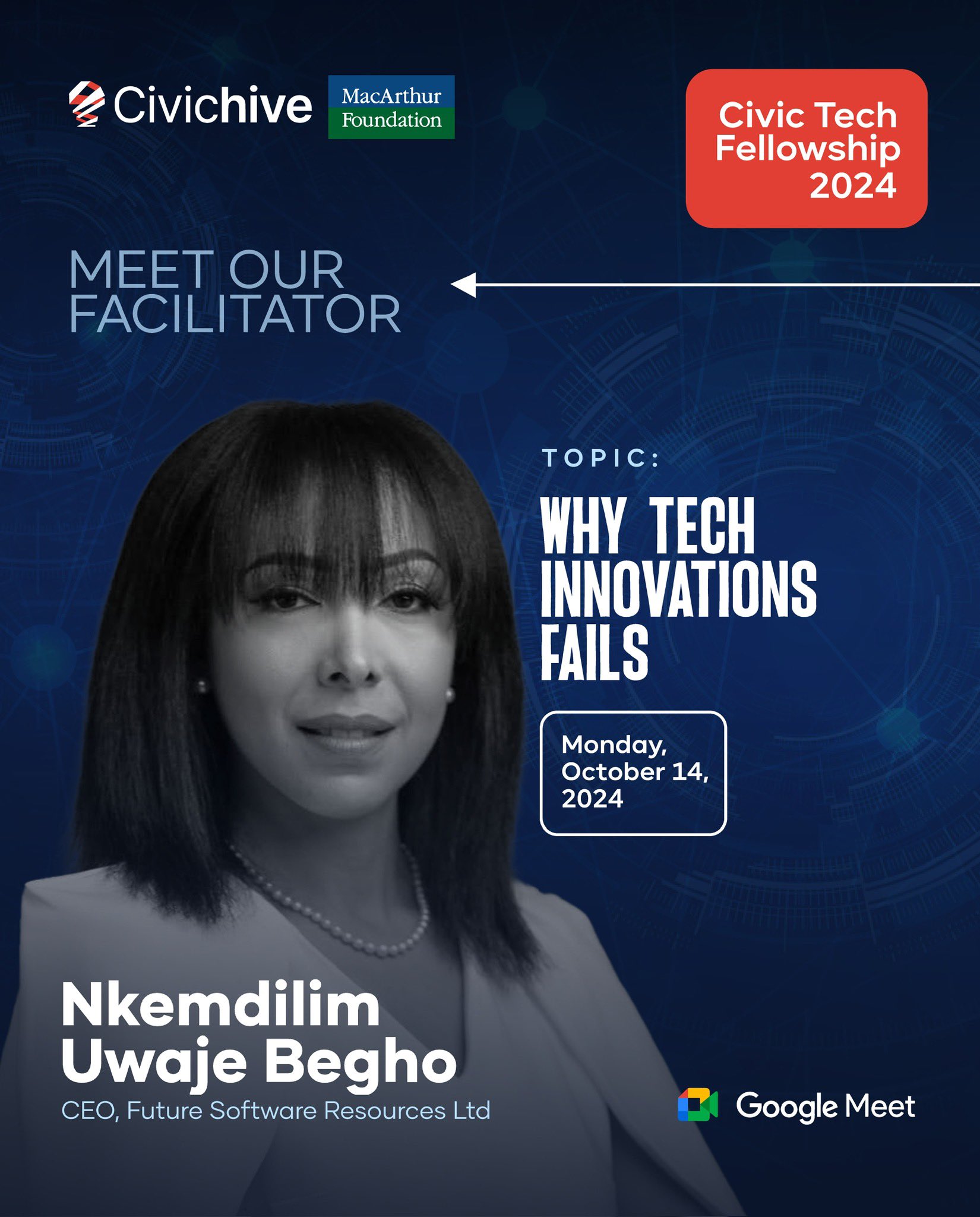Innovation is the driving force behind transformative change, economic growth, and the evolution of societies. Yet, despite its potential, a significant percentage of innovations never reach their full potential or, worse, fail entirely. This raises a critical question: Why does innovation fail? In a recent thought-provoking session with the 2024 Civic Hive Civic Tech Fellows, Nkemdilim Uwaja, CEO of Future Software Resources Ltd., offered valuable insights into this complex issue.
- Understanding the Essence of Innovation
Before exploring why innovation fails, it’s crucial to understand what innovation truly entails. Nkemdilim emphasized that innovation is not merely about creating something new. Rather, it is about creating value in a way that meets unmet needs, solves real-world problems, or improves upon existing solutions. Thus, it is important to “Embrace that Failure is part of the process because it makes things better” Also, to ponder on the fact that “70% of innovation never makes it past the idea stage or fails to adapt to the market is a true reflection of the need to innovate around changes”.
Nkemdilim’s session highlighted that innovation often fails because of some General, Internal & External causes which includes: Lack of market fit & User adoption, Lack of effective understanding by users, Scalability challenges, Poor resource allocation , Regulatory & Compliance challenges, Economic and Market conditions, Unforeseen competition and Lack of clear vision & Leadership.
- Misreading the Market and Ignoring User Needs
One of the primary reasons innovation fails, as Nkemdilim mentioned, is the disconnect between an innovation and the people or users it is meant to serve.This is because most times innovators create solutions assuming they understand their users’ needs without validating these assumptions. And as such innovative projects fail because they do not align with the real needs and behaviors of their target users. She pointed out that when there is this disconnect, it leads to innovations that are “cool” but lack a real purpose, resulting in wasted resources, money, time and enthusiasm.
A typical case study cited for the fellows is Google Glass – An innovative augmented reality product created in 2013 to revolutionize hand-Free computing. This innovation failed because it had some privacy concerns as it could record people without their knowledge and consent which led to people resisting to use the product. The lesson to be learnt from this is that there was a market misfit as consumers could not connect to the innovation and the overlook of social norms that could be tied to privacy concerns with the innovation.
- Lack of Long-term Vision and Adaptability
Another critical point that Nkemdilim highlighted is the importance of having a Scalability vision from the get-go and the flexibility to adapt to changes. Many innovators fall into the trap of short-termism, focusing only on immediate goals or quick wins rather than envisioning the sustained impact of their innovations.
Additionally, an unwillingness to adapt in the face of new challenges can be fatal to an innovation’s success. A case study for this was Blackberry and its failure to move from keypads to screen touch devices.
Key Takeaways for Aspiring Innovators
Reflecting on the session with Nkemdilim Uwaja, several key insights on how to avoid failure for fellows seeking to drive successful innovation:
-
- Market research : Innovators must continuously study the target audience or consumer, market structure, competition, and Influences within the ecosystem of their innovation to ensure that they are meeting actual needs.
- User-centered development: Incorporating user feedbacks from early development to bring about higher adoption rate and adopt agile approaches which allows teams adapt quickly to feedback
- Prepare for Scalability: Successful innovation is not static. Innovators must plan for scalability from the start and secure sustainable funding. It requires both a long-term vision and the flexibility to pivot as needed.
- Cross-Functional collaboration: Successful innovations involve strong collaboration between the technical, marketing, and leadership teams to align goals and strategies.
Nkemdilim’s insights serve as a powerful reminder that innovation, particularly in the civic space, is challenging yet essential. Tech innovations hold the potential to solve pressing societal issues, but only if they are thoughtfully crafted, purpose-driven, and backed by sustainable resources. As future leaders in civic tech, the Civic Hive fellows left the session with not only inspiration but a deep understanding of what it takes to drive meaningful, impactful innovation.

